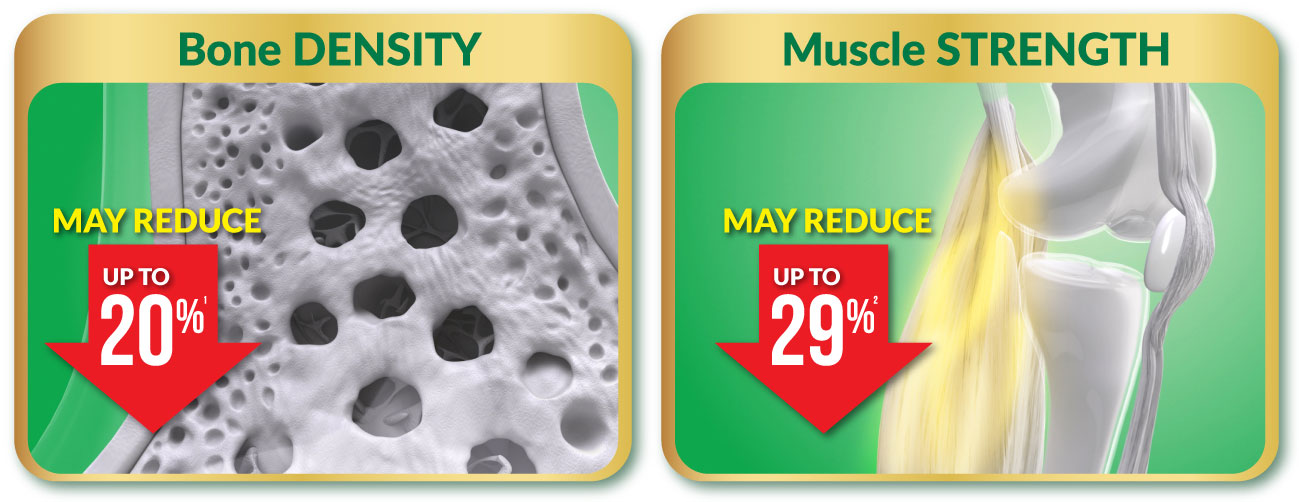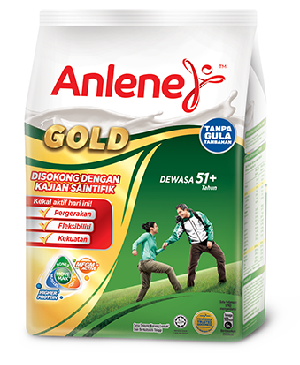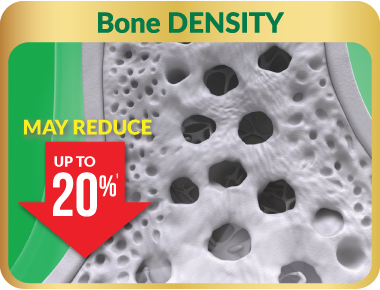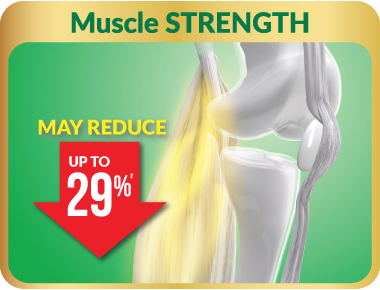Lurking inactivity risks during MCO
The 4-week-stay-at-home order is an important action to help curb the spread of Covid-19.
However we need to be aware of the underlying health conditions that could creep up if left unchecked, especially those that are affecting people’s mobility such as bone and muscle strength and the immunity.
Mobility health is vital
As we age, our bones, joints and muscles could become weaker and affect our strength and flexibility to perform daily tasks such as carrying heavy things, climbing stairs, squatting and standing up.
Mobility is essential for getting through the day as it promotes bone and muscle health to help us stay physically active in our daily living. Being physically active such as regular exercise is important in maintaining a good body defence system¹.
Bones, muscles and joints form an integrated system to support our mobility, flexibility and stability.
Bones alone, they not only form our shape and support our weight, but also protect our nerves, organs and all the other softer parts of our body.
“When we were younger, we were much more active – moving around and using our muscles more, and putting our joints to good use at the same time. However, as we age, there will be some form of degeneration that occurs not only to your joints, but also a high potential of a phenomenon known as osteoporosis – a reduction in bone density,” explains Dr Gandhi Nathan Solayar, Consultant Orthopaedic Surgeon from Ara Damansara Medical Centre (ADMC).
Physical inactivity may affect bone and muscle health besides negative impact on body defence system².


“We do know that, immobility and people living a sedentary or inactive lifestyle are at higher risk of developing osteoporosis. So, not being physically active is bad for bone health and many other things,” warns Dr Gandhi.
It has been reported that we may lose up to 20% of the bone density³ as we age and nearly 30% of the muscle strength⁴ if we stay inactive for just two weeks.
Health experts caution that osteoporosis is a silent disease, making it difficult to get detected. So what are the signs or symptoms that we may anticipate?
“Yes, it is a silent disease. People with osteoporosis don’t really know they have it simply because they don’t feel the pain,” Dr Gandhi points out a brutal fact. “They don’t feel their bones getting weaker until it’s too late. So, when fractures happen, it will lead to other painful problems.” he continues.
Osteoporosis diagnosis
“It starts with history taking of a patient, followed by a complete physical examination. And then we go through all the risk factors from chronic diseases to ongoing medications, lifestyle, and so on,” he explains.
Dr Gandhi also draws our attention to a bone density scan, which is a quick and painless procedure using the X-ray to measure the strength of our bones.
Bone density scan can be done at either a public or private hospital, with the latter incurring a fee.
“It’s a pretty straightforward procedure that takes about 10 to 20 minutes,” he adds.


What are the risk factors?
US Centre of Disease Control and Prevention⁵ stated that osteoporosis is more common in women, affecting about 25% (1 in 4) of women over 65, and about 5% (1 in 20) of men over 65.
The orthopaedic surgeon recommends regular exercise that works on the bones, muscles and joints to maintain good mobility and flexibility.




Adult milk powder such as Anlene Gold is one of the smart options. The product is scientifically formulated with MFGM ActiveTM (providing components similar to those found in joint fluids), high protein, collagen, 10 vitamins and minerals (including calcium) with no added sugars. It provides protein to help build and repair body tissues for a strong body defence system. Drink two glasses a day and move with flexibility and strength today!
96%* feel that better strength and flexibility after 4 weeks.
*Source: Survey conducted by Home Tester Club between 22/10/2019 and 3/1/2020, 100 members have received and home-tested Anlene Gold.
Watch how Anlene has helped to support them in their daily nutrition intake.
Stay active at home
Despite the 4-week home confinement due to the Covid-19 outbreak, Anlene would like to empower Malaysians to stay active by joining singer and songwriter Stacy Anam and tai chi master David Bao for inspiring #MoveAtHome and #JanganDudukJe home-challenge fitness drills. And at the same time, you can share your workouts with us to inspire others too.
Get your Anlene Gold on Lazada for a special discount!
References: ¹ MedlinePlus.gov | ² NCBI.gov | ³ NOF, 2009 | ⁴ Vigelsø A. et al. 2015 | ⁵ CDC.gov | ⁶ RNI, 2017
The 4-week-stay-at-home order is an important action to help curb the spread of Covid-19.
However we need to be aware of the underlying health conditions that could creep up if left unchecked, especially those that are affecting people’s mobility such as bone and muscle strength and the immunity.
Mobility health is vital
As we age, our bones, joints and muscles could become weaker and affect our strength and flexibility to perform daily tasks such as carrying heavy things, climbing stairs, squatting and standing up.
Mobility is essential for getting through the day as it promotes bone and muscle health to help us stay physically active in our daily living. Being physically active such as regular exercise is important in maintaining a good body defence system¹.
Bones, muscles and joints form an integrated system to support our mobility, flexibility and stability. Bones alone, they not only form our shape and support our weight, but also protect our nerves, organs and all the other softer parts of our body.
“When we were younger, we were much more active – moving around and using our muscles more, and putting our joints to good use at the same time. However, as we age, there will be some form of degeneration that occurs not only to your joints, but also a high potential of a phenomenon known as osteoporosis – a reduction in bone density,” explains Dr Gandhi Nathan Solayar, Consultant Orthopaedic Surgeon from Ara Damansara Medical Centre (ADMC).
Physical inactivity may affect bone and muscle health besides negative impact on body defence system².
Physical inactivity could affect our overall health. In addition, bones deteriorate with age, which could give rise to the development of osteoporosis when the body loses too much or makes too little bone. And when the bones become less dense, they become more fragile and are more likely to fracture.
“We do know that, immobility and people living a sedentary or inactive lifestyle are at higher risk of developing osteoporosis. So, not being physically active is bad for bone health and many other things,” warns Dr Gandhi.
It has been reported that we may lose up to 20% of the bone density³ as we age and nearly 30% of the muscle strength⁴ if we stay inactive for just two weeks.
Health experts caution that osteoporosis is a silent disease, making it difficult to get detected. So what are the signs or symptoms that we may anticipate?
“Yes, it is a silent disease. People with osteoporosis don’t really know they have it simply because they don’t feel the pain,” Dr Gandhi points out a brutal fact. “They don’t feel their bones getting weaker until it’s too late. So, when fractures happen, it will lead to other painful problems.” he continues.




Osteoporosis diagnosis
“It starts with history taking of a patient, followed by a complete physical examination. And then we go through all the risk factors from chronic diseases to ongoing medications, lifestyle, and so on,” he explains.
Dr Gandhi also draws our attention to a bone density scan, which is a quick and painless procedure using the X-ray to measure the strength of our bones.
Bone density scan can be done at either a public or private hospital, with the latter incurring a fee.
“It’s a pretty straightforward procedure that takes about 10 to 20 minutes,” he adds.
What are the risk factors?
“Obviously, age and gender are the non-modifiable risk factors you cannot change. The older you are, the more vulnerable you are. Females have a higher risk of developing osteoporosis especially later in life and post-menopausal. Those with a positive family history are at risk too,” he says, not forgetting the modifiable risk factors such as lifestyle and diet lacking calcium and vitamin D (for effective calcium absorption).
US Centre of Disease Control and Prevention⁵ stated that osteoporosis is more common in women, affecting about 25% (1 in 4) of women over 65, and about 5% (1 in 20) of men over 65.
The orthopaedic surgeon recommends regular exercise that works on the bones, muscles and joints to maintain good mobility and flexibility.


Healthy diet is important
Healthy diet is highly recommended by Dr Gandhi.
A healthy diet that contains calcium (e.g. milk and dairy products, leafy greens, legumes, tofu), protein, and vitamin D is one of the keys to maintaining good bone and muscle health for better mobility and flexibility. Moreover, nutrient such as protein⁵ provides the important building block for our body defence system to help protect us from harmful foreign invaders.


Adult milk powder such as Anlene Gold is one of the smart options.
The product is scientifically formulated with MFGM ActiveTM (providing components similar to those found in joint fluids), high protein, collagen, 10 vitamins and minerals (including calcium) with no added sugars. It provides protein to help build and repair body tissues for a strong body defence system. Drink two glasses a day and move with flexibility and strength today!
96%* feel that better strength and flexibility after 4 weeks.
*Source: Survey conducted by Home Tester Club between 22/10/2019 and 3/1/2020, 100 members have received and home-tested Anlene Gold.
Watch how Anlene has helped to support them in their daily nutrition intake.
Get your Anlene Gold on Lazada
for a special discount.
Stay active at home
Despite the 4-week home confinement due to the Covid-19 outbreak, Anlene would like to empower Malaysians to stay active by joining singer and songwriter Stacy Anam and tai chi master David Bao for inspiring #MoveAtHome and #JanganDudukJe home-challenge fitness drills. And at the same time, you can share your workouts with us to inspire others too.
Reference
¹ MedlinePlus.gov | ² NCBI.gov | ³ NOF, 2009
⁴ Vigelsø A. et al. 2015 | ⁵ CDC.gov | ⁶ RNI, 2017
